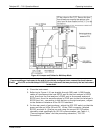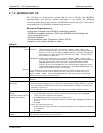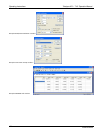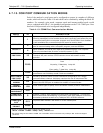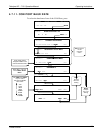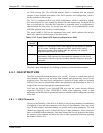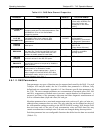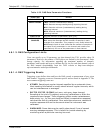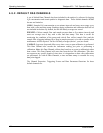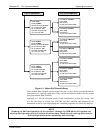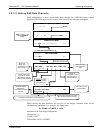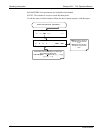
Teledyne API – T101 Operation Manual Operating Instructions
125
the DAS (Section 4.8). The APICOM manual, which is included with the program,
contains a more detailed description of the DAS structure and configuration, which is
briefly described in this section.
The T101 is configured with a basic DAS configuration, which is enabled by default.
New data channels are also enabled by default but each channel may be turned off for
later or occasional use. Note that DAS operation is suspended while its configuration is
edited through the front panel. To prevent such data loss, it is recommended to use the
APICOM graphical user interface for DAS changes.
The green SAMPLE LED on the instrument front panel, which indicates the analyzer
status, also indicates certain aspects of the DAS status:
Table 4-20. Front Panel LED Status Indicators for DAS
LED
STATE
DAS STATUS
Off System is in calibration mode. Data logging can be enabled or disabled
for this mode. Calibration data are typically stored at the end of
calibration periods, concentration data are typically not sampled,
diagnostic data should be collected.
Blinking Instrument is in hold-off mode, a short period after the system exits
calibrations. DAS channels can be enabled or disabled for this period.
Concentration data are typically disabled whereas diagnostic should be
collected.
On Sampling normally.
The DAS can be disabled only by disabling or deleting its individual data channels.
4.8.1. DAS STRUCTURE
The DAS is designed around the feature of a “record”. A record is a single data point of
one parameter, stored in one (or more) data channels and generated by one of several
triggering event. The entire DAS configuration is stored in a script, which can be edited
from the front panel or downloaded, edited and uploaded to the instrument in form of a
string of plain-text lines through the communication ports.
DAS data are defined by the PARAMETER type and are stored through different
triggering EVENTS in data CHANNELS, which relate triggering events to data
parameters and define certain operational functions related to the recording and reporting
of the data.
4.8.1.1. DAS Channels
The key to the flexibility of the DAS is its ability to store a large number of combinations
of triggering events and data parameters in the form of data channels. Users may create
up to 20 data channels and each channel can contain one or more parameters. For each
channel one triggering event is selected and up to 50 data parameters, which can be the
same or different between channels. Each data channel has several properties that define
the structure of the channel and allow the user to make operational decisions regarding
the channel (Table 4-20).
07266B DCN6485



